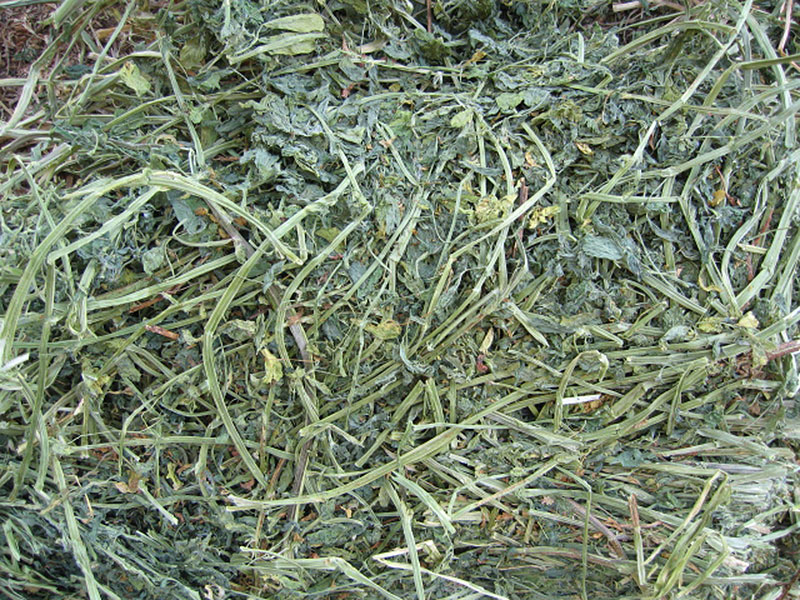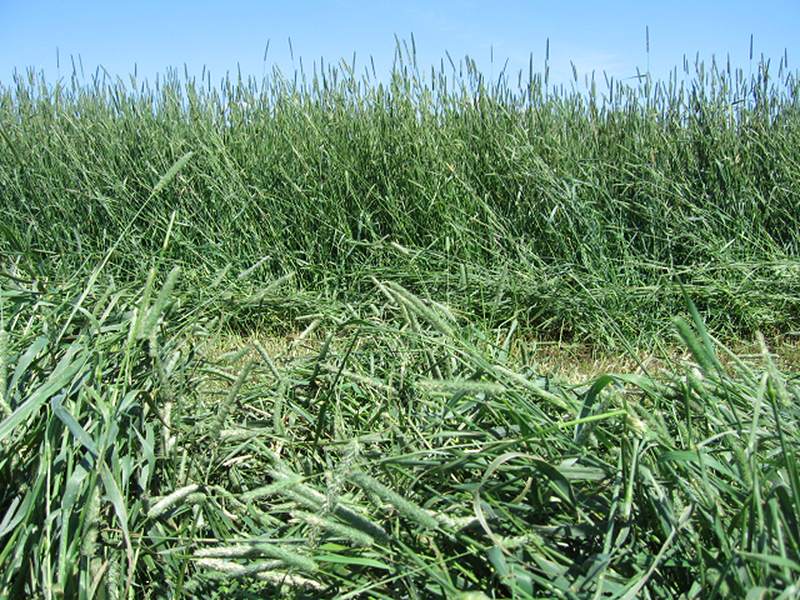We learned in last month’s blog article that alfalfa hay supports milk production in dairy cattle because of its high energy value and low fiber content. There are many beneficial nutritional attributes in alfalfa hay that, over other forage choices for dairy cows, give producers the best economic value.
Dairy farmers are not the only producers that benefit from alfalfa hay. It is used as forage nationally and internationally for other livestock like horses, sheep and goats. Beef cattle producers are attracted by the high protein and energy value of alfalfa hay, and there are many advantages to feed beef cows this high quality forage.
Nutritional Value of Alfalfa Hay
This high protein and high energy forage also holds high mineral values. Beef cows that consume alfalfa hay will benefit from quick nutrient absorption due to the lower fibre content.
Alfalfa Hay: Protein & Energy
Alfalfa hay in the late bud, early bloom stage can contain 16-20% crude protein. Even alfalfa hay cut later can still contain 12-15% crude protein, while fiber content rages from 20-28%. The digestion rate of alfalfa hay is about 36 hours. Lower quality forages contain much less protein and more fiber, which contribute to digestion taking up to 70 hours. The actual quality of protein in alfalfa hay is excellent with more than 70% of the total protein being digestible. (University of Nevada, Cooperative Extension Fact Sheet 93-23)
Although alfalfa hay is known for its high protein content, its high energy content should not be overlooked. Beef cows need high energy forage to regain body weight after calving and producing milk for calves so they are ready to re-breed sooner. Since alfalfa hay is digested much quicker than other forages, beef cows are able to gain poundage faster, produce more milk for their calves, and maintain a better condition.
Alfalfa Hay: Vitamins & Minerals
Alfalfa hay has a high nutritional quality. Alfalfa contains vitamins A, D, E, K, U, C, B1, B2, B6, B12, Niacin, Panthothanic acid, Inocitole, Biotin, and Folic acid.
Freshly harvested alfalfa hay is very rich in vitamin A, which can actually help reduce stress in animals caused by moving or shipping cattle. Vitamin E can help eliminate ‘white muscle disease’, which can cause losses in calves due to a deficiency of vitamin E and selenium.
It also contains the following minerals: Phosphorus, Calcium, Potassium, Sodium, Chlorine, Sulfur, Magnesium, Copper, Manganese, Iron, Cobalt, Boron, and Molybdenum and trace elements such as Nickel, Lead, Strontium and Palladium.
If one pound of alfalfa hay is fed per 100 pounds of body-weight, beef cows will meet their daily requirements for calcium, magnesium, potassium, sulfur, iron, cobalt manganese and zinc. The high levels of calcium in alfalfa hay are beneficial to lactating beef cows and developing heifers and bulls.
Barr-Ag Alfalfa

Barr-Ag alfalfa hay is GMO-free and graded by an independent laboratory analysis. Clean air, long warm days, cool nights, soil rich in calcium and magnesium give us more than ideal growing conditions for high qualify alfalfa hay.
These growing conditions, combined with the nutritional attributes of alfalfa hay for dairy cow, beef cow, and other livestock producers, have brought us customers from all over the world!
Come give us a visit, or contact us for more information at 403 507 8660 or email [email protected].
Sources: North American Alfalfa improvement Conference www.naaic.org, University of Nevada Corporate Extension, http://www.unce.unr.edu/publications/files/ag/






